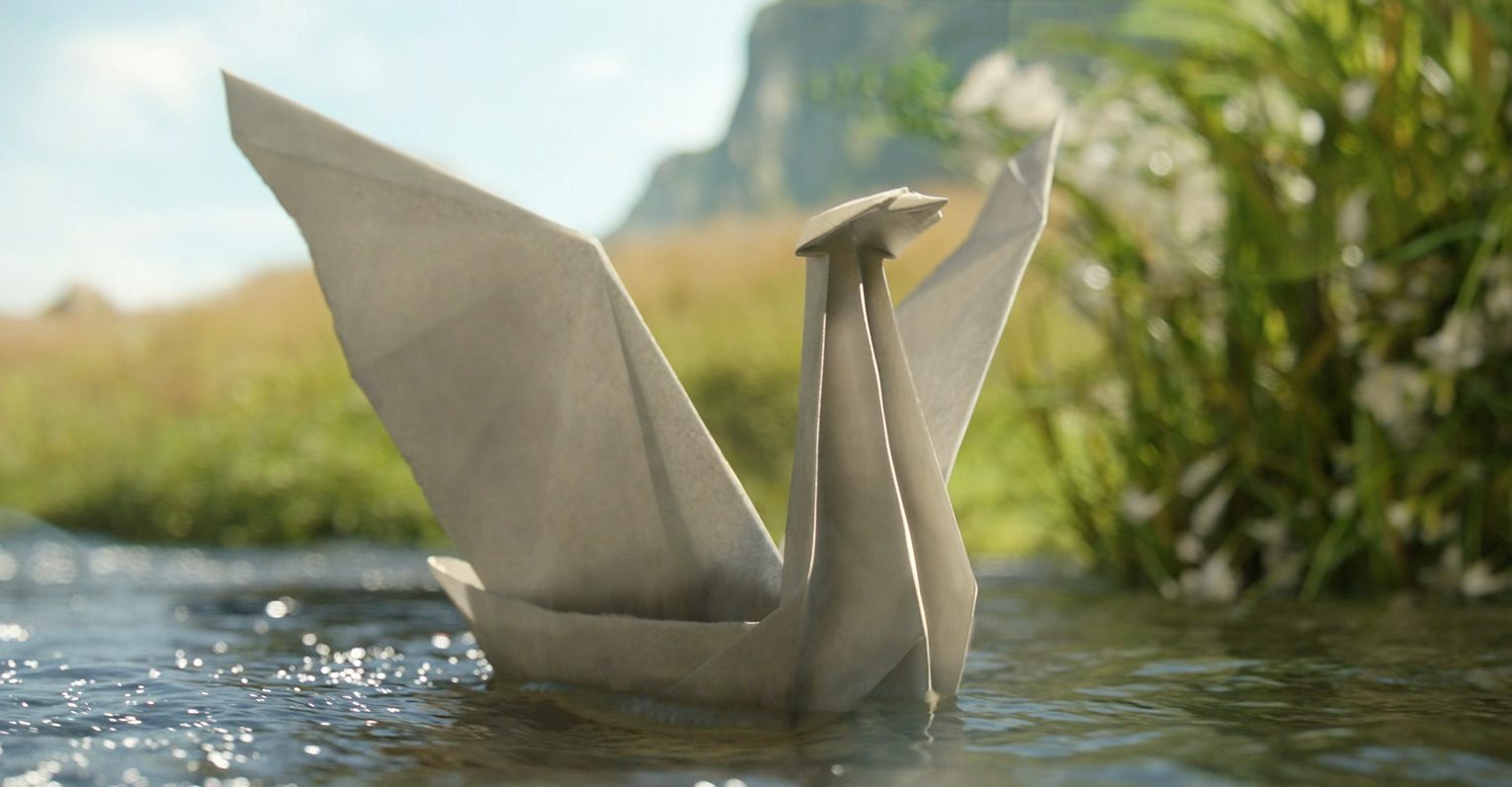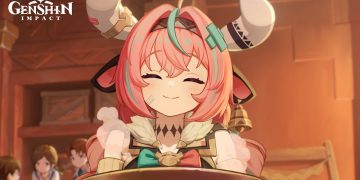The Rings of Power is shaping up to be a grand journey through the Middle-Earthian landscape. The Second Age-set show features a massive core cast dispersed across numerous different kingdoms and geographic regions. Even though the show is juggling numerous plots, the production team hasn’t overlooked the tiny things. Everything in “Rings of Power” appears to have been handled with care, from detailed costumes to lavish scenery.
Even the actor Benjamin Walker admitted in an interview that he was “gobsmacked” on the first day of filming when he arrived on site and was met by an army of technicians and craftspeople and saw half a million hand-painted golden leaves on the ground.
The focus on detail goes beyond only the quality aspect. The gifted writers’ room has also found several opportunities to reference Professor Tolkien’s greater legendarium throughout the Second Age show. Some of these are minor specific details that are simple to miss. Others are genuine Easter eggs that have been hidden for attentive viewers to find after their tenth viewing. Here are some of the most intriguing Easter eggs and minute elements that viewers may have missed thus far after our thorough examination of the first episode’s footage.
Here are The Rings of Power Episode 1 Easter Eggs:
Fëanor’s Oath
Another hidden Easter egg can be found when a group of tough-looking Elves pulls their swords together in a quick sequence early in “Rings of Power.” The scene immediately reminds readers of Tolkien’s mythology of the well-known Oath of Fanor from “The Silmarillion.” Yes, Finrod, Galadriel’s brother, is among them, which seems out of place given the source material, but other than that, everything makes sense. Despite being briefly mentioned in the show’s prologue, the incident marked a turning point in the history of Middle-earth. The oath is professed by Fëanor and his seven sons, an iconic symbol from the world of the Elvish.
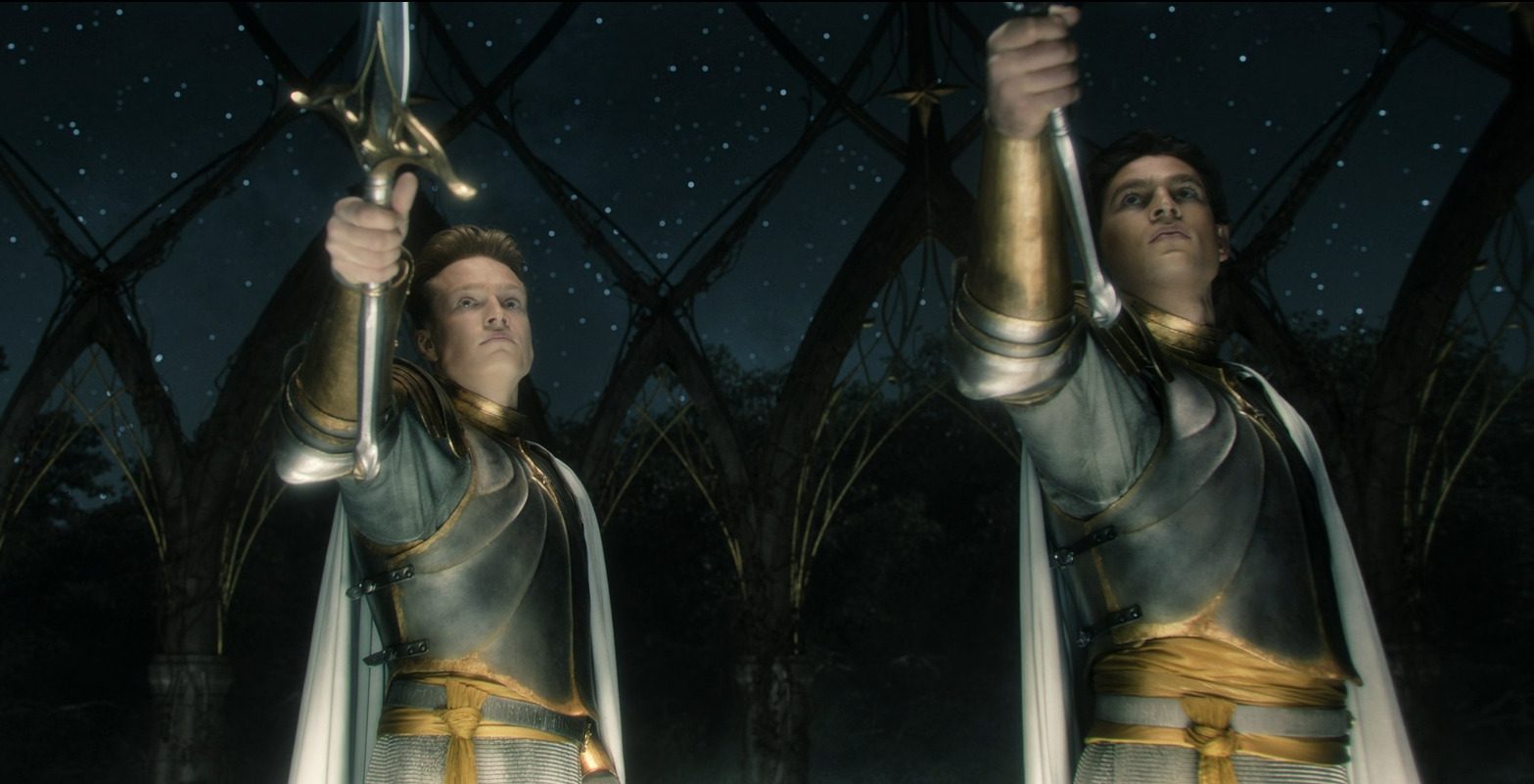
It’s an unbreakable oath that results in a lot of awful things later on, and it goes like this in the book: “Then Fanor made an awful oath. His seven sons immediately raced to his side and made the same oath beside him. Their drawn swords glowed red with blood in the light of the torches.” The swords may not have been blood-red in the episode. And if it’s purely the Oath of Fanor—which, to be fair, isn’t stated—Finrod shouldn’t be there. However, despite how faintly they are described, the scene and the acts seem to be a clear reference to the oath, which plays a significant role in the stories that come after.
The War of Wrath And Battle Of Unnumbered Tears
It’s likely that Rings of Power’s prologue is so brief and vague because it doesn’t have rights to “The Silmarillion.” Without making a clear connection between the several significant events in that book, it quickly passes over many of them. A few, like the Oath of Fanor, are simple to spot. Others, however, appear to be a confusing mash-up of several events presented simultaneously, such as a number of battles and violent fights.
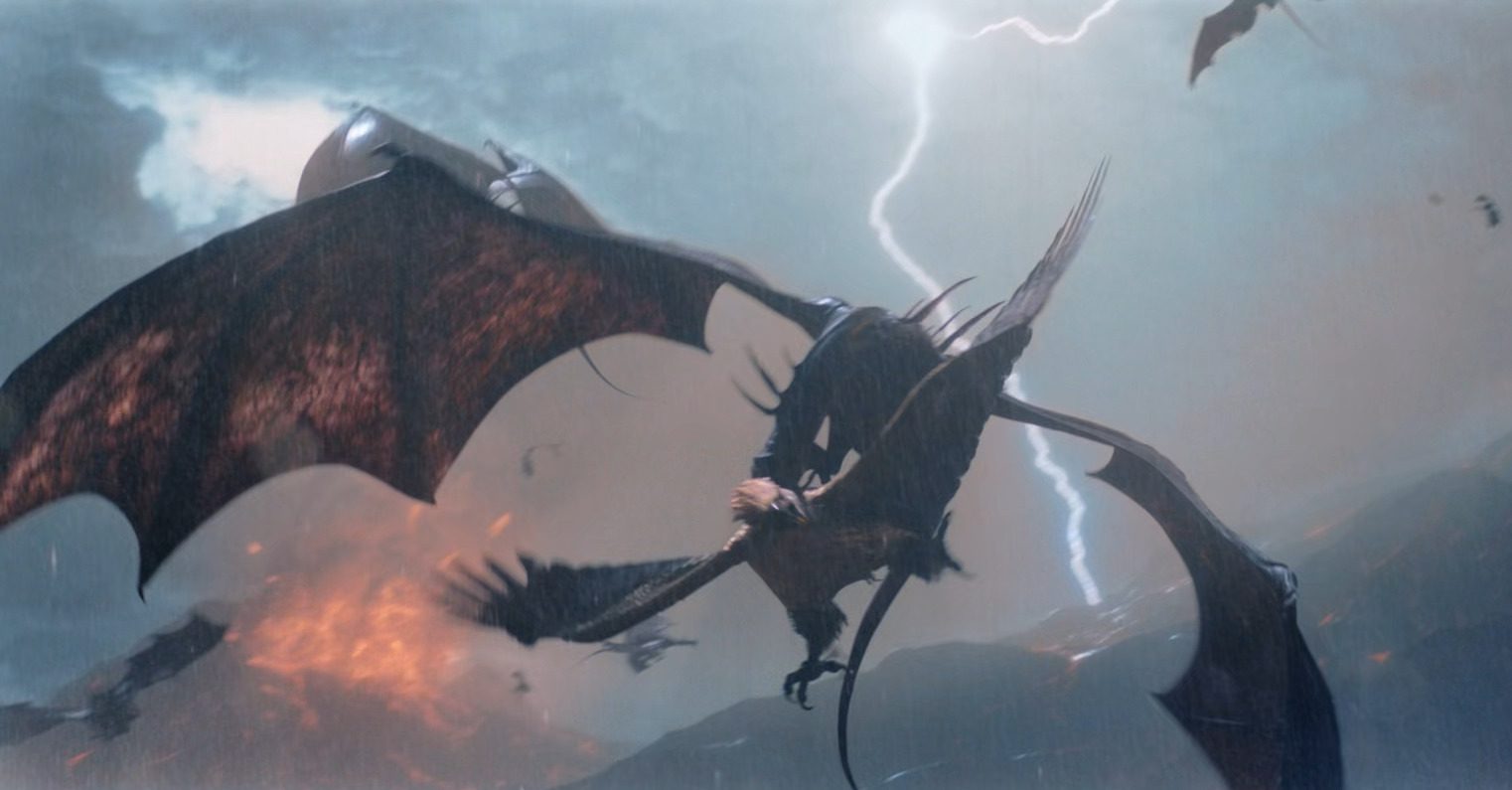
These open with a scene of a dragon hurling a large eagle through the air and crashing it to the ground. The only time this could have happened was just before “Rings of Power” began, during the world-shattering, age-ending War of Wrath. The first Dark Lord, Morgoth, is finally killed in that battle. But hold on. And there’s more.
A different battle comes to mind as Galadriel takes up a helmet and places it in a massive pile of other helmets. The Battle of Unnumbered Tears is regarded as one of the most devastating events in the First Age of Middle-earth history. The Hill of the Slain is formed after the battle, which doesn’t go well for the good guys, and is composed primarily of dead bodies. Although it’s not quite the same as a collection of helmets, Galadriel’s painful experience after the unidentified battlefield seems to refer to that famously terrible event.
Finrod’s Body Scratches
The Easter eggs do not really take long to start popping up. In fact, there is one that shows up in the prologue of the episode. As Finrod Felagund’s body is seen lying on a table covered by a cloth, Galadriel can be heard telling about her killed brother as she plays the narration. His flesh is scarred from multiple scars, and his arms are outstretched. The mark that Sauron places on him is one of these cuts that is highlighted in the scene. It turns out that Sauron’s branding methods are not in line with canon. The Dark Lord doesn’t wander around carving signs into people’s bodies in the original book. He does, however, leave the brave Finrod Felagund with quite a few scars.

Finrod helps Beren and Lthien, the heroes of “The Silmarillion,” in their journey to recover one of the namesake sacred jewels known as the Silmarils. While doing so, he and his friends are taken prisoner by, you guessed it, Sauron. The antagonist, who isn’t the Dark Lord yet, uses a werewolf to kill the gang one by one. The text in the reads, “However, when the wolf went for Beren, Felagund put forth all his force, and shattered his chains; and he fought with the werewolf and destroyed it with his hands and teeth; though he himself was wounded to death.”
Also Read: The Rings Of Power Episode 1 Review: Visuals Are Breathtaking, But It Also Has Some Flaws
Swan Boats
In Peter Jackson’s extended version of “The Fellowship of the Ring” Galadriel sets sail a swan boat in Lothlórien. In “Rings of Power,” Galadriel is seen sailing to Valinor in a boat with a prow resembling a bird. Young Galadriel also builds a fantastic paper boat that sails in the show’s opening scene. And as it moves, its head, neck, and wings all gracefully begin to rise. All right, what’s up with all the swan boats? Tolkien is where we look for the solution. Without delving into too much detail, the Teleri are one of the elf tribes that inhabit Valinor. They usually live in a location known as Alqualond, which roughly translates to the Haven of the Swans.
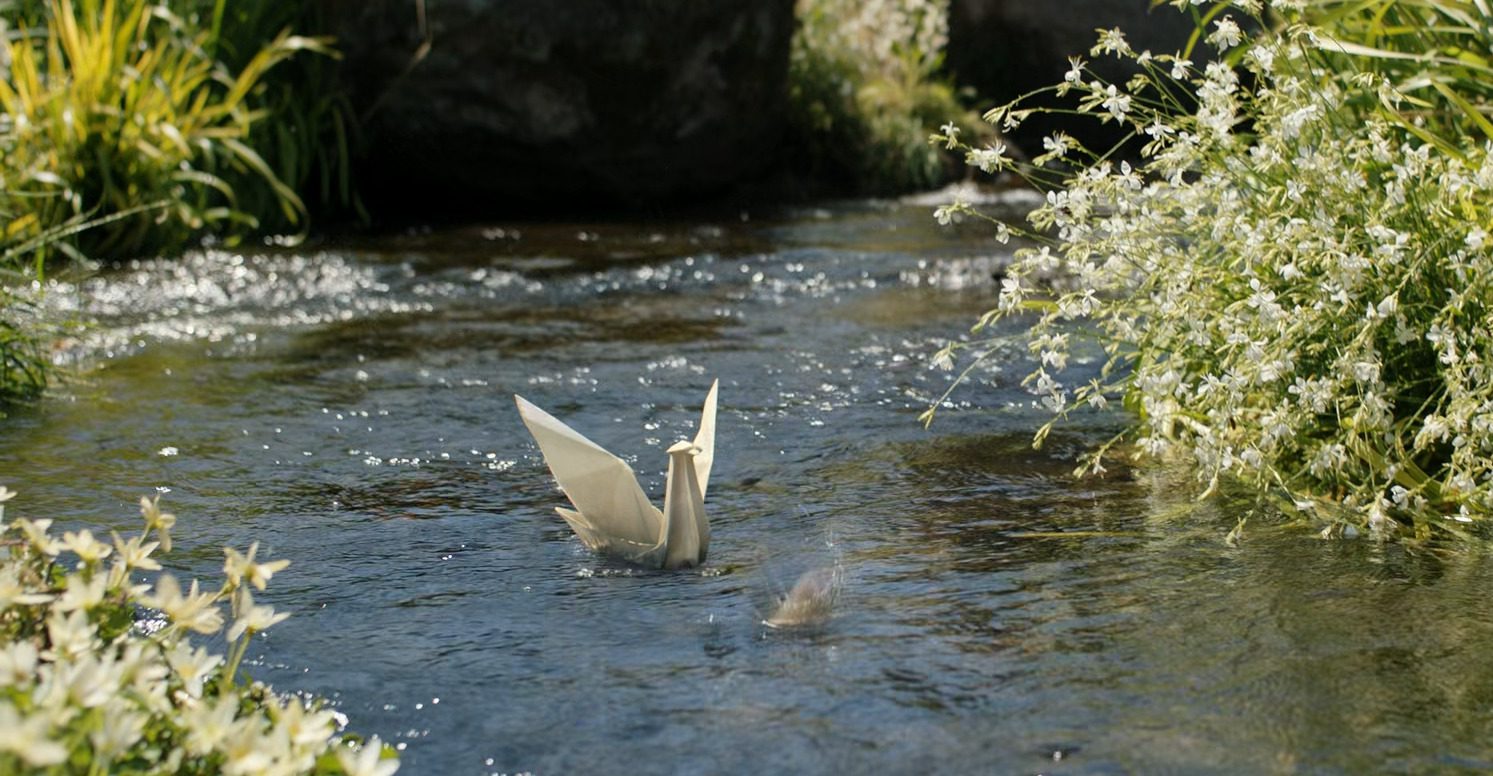
According to “The Silmarillion,” this group and their home were described as “that, their town, and the harbor of their ships; and those were constructed in the form of swans, with snouts of gold, eyes of gold, and jet.” It is explained much later in the book how the Elves also traveled to the island nation of Nmenor, saying, “And thence at times the Firstborn yet would come sailing to Nmenor in boats, as white birds rising from the sunset.” Swan-shaped boats, in particular, are a common element of Elvish nautical activity, as are bird-shaped boats.
Harfoots
In “Rings of Power,” the Harfoot family is running circles around a few suspicious hunters when we first meet them. There are no difficulties for The Little People in keeping quiet and avoiding detection. One of the Halflings blows a kind of whistle to let the Big Folk know that the area is safe. The casual activity makes perfect sense, but for diehard Tolkienites, it might also recall another instance from “The Two Towers,” when Théoden, King of Rohan, speaks with a couple of Hobbits in Isengard.
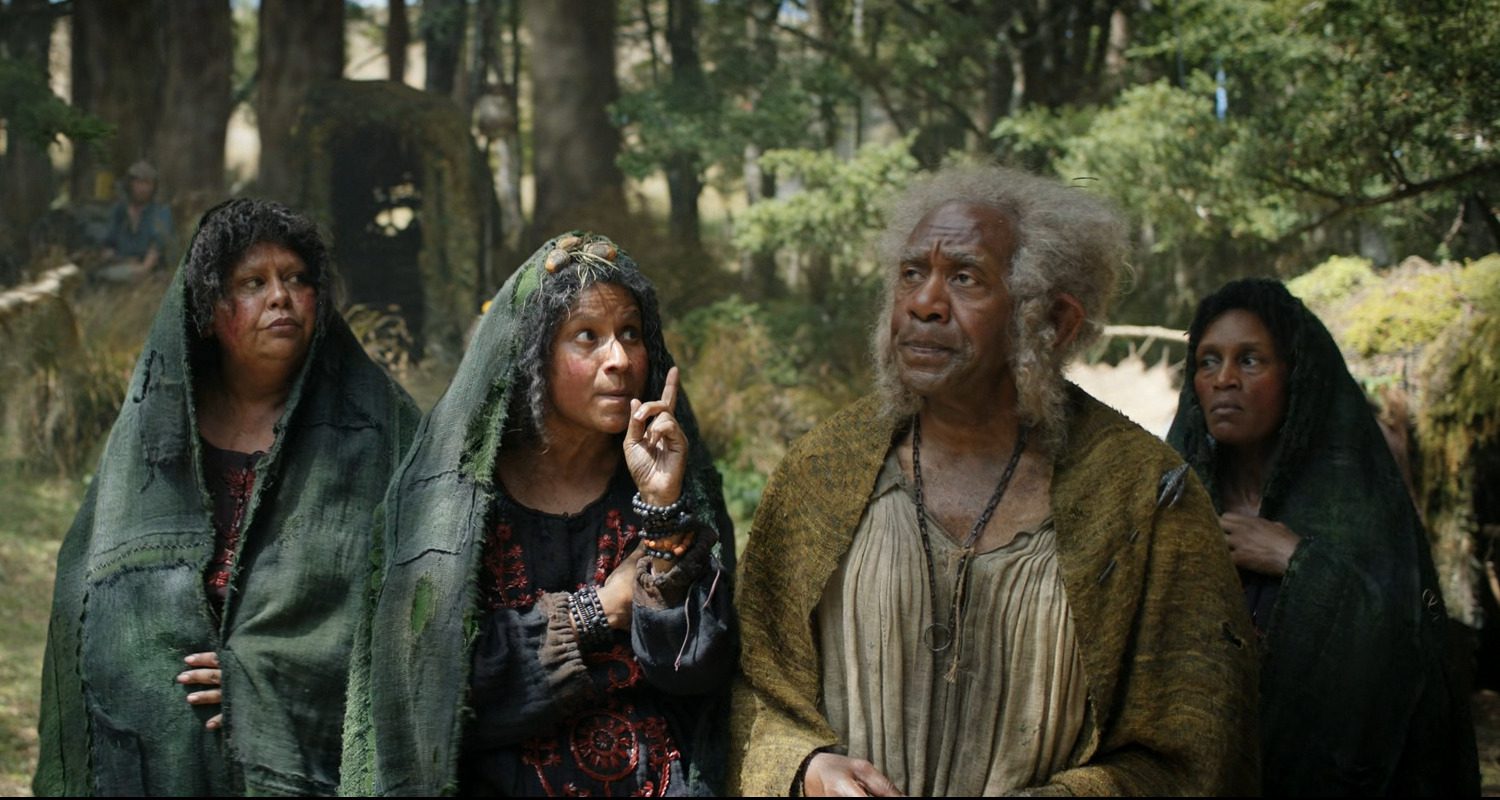
When “Rings of Power” opens, the Harfoot family is already living in a region close to where Merry, Pippin, and Théoden’s ancestors came from, which serves as a unifying force for the three of them. In the conversation, Théoden did mention that the Halflings in the apocryphal tales that his ancestor’s members have had some interesting skill sets. He continues by saying that they can disappear in an instant. Additionally, he adds, “They can change their voices to sound like birds’ piping.” Even though it’s obvious that’s exaggerated, it seems like the “Rings of Power” writers might be hinting at the origin of that tale.
A Food Difference Between Hobbits And Harfoots
It’s possible that the Harfoots from “Rings of Power” and the Hobbits from subsequent stories are distantly related. But there are many things that separate them, not the least of which being that one group follows a nomadic, traveling lifestyle, while the other follows a quiet, domesticated life. Even still, despite the drastically diverse setting, some throughlines are already visible. Take their food, for instance.
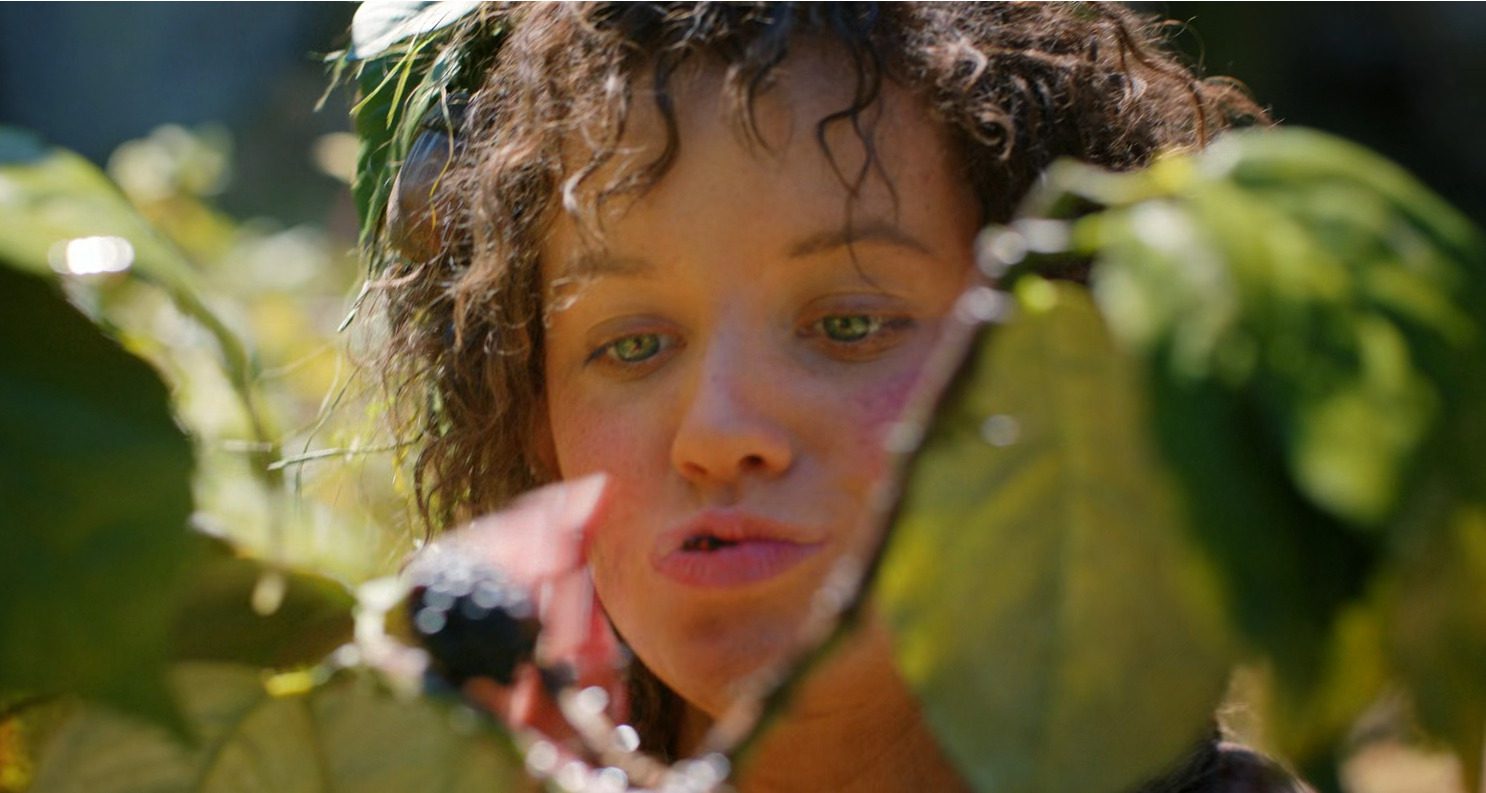
Harfoots have already been proved to have a Hobbit-like hunger for delicious food. There is no doubt that Harfoots enjoy a nice meal, even though they prepare and consume their food in a hunter-gatherer fashion. And the children’s love of food is clear when Nori takes a group of them to a berry patch. The scene, however, also draws a cool comparison to “The Return of the King’s” last pages.
In that book, Tolkien describes the happy ending to the War of the Ring, highlighting how much the Shire prospers once Sauron is defeated. You guessed it—children and fruit—serve as an example of this at one point. According to the text, the fruit was so rich that young hobbits “almost drowned in strawberries and cream; afterwards, they sat on the grass under the plum trees and ate, till they had made mounds of stones like little pyramids or the stacked skulls of a victor, and then they moved on.” Before becoming Hobbits, the Harfoots will undergo significant change, although it appears that the kids will continue to eat fruit during the entire process.
Tolkien’s Ents
There is a scene in the first episode of “Rings of Power” where Marigold Brandyfoot has a serious conversation with Nori about her noticeably reckless behavior. The Halfling mother explains how the world actually works to the younger, less experienced Nori in the conversation by adding, “I’ve repeated it many times. The elves must guard their forests, Dwarfs their mines, Men their grain fields, and even trees must be careful about the soil that supports their roots. But we Harfoots are free from of the world’s worries.” Nori flinches at the very Hobbit-like pep talk, but it has no effect on her desire for adventure.
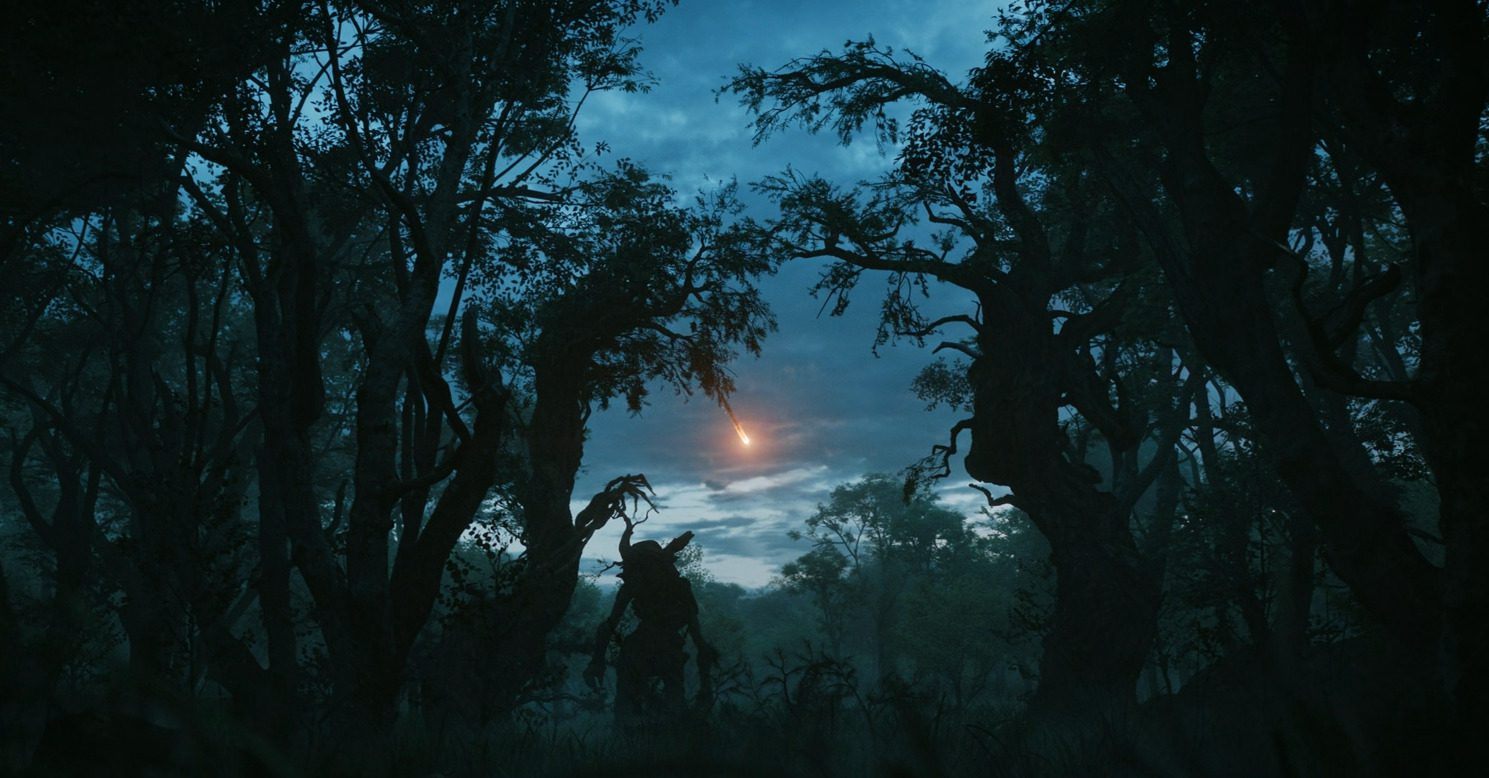
However, it also might be the first time in the show that Tolkien’s Ents are mentioned. At several points, the Ents are referred to as the Shepherds of the Trees. At first, they were meant to be more than just trees. They are meant to protect them. The Ents are specifically created in “The Silmarillion” to protect trees from other creatures who might try to damage them. Later in this episode, too, it is established that Ents will play a role in the “Rings of Power” storyline. Three Ents are clearly visible moving amongst the woods as the meteor speeds overhead, and they briefly make an appearance.
Important Elf Statues
In Episode 1, Galadriel goes to a quiet area of the Lindon woodlands after learning that she will be sent back to Valinor. Elrond finds her there, and the two then engage in a lengthy conversation. They are surrounded by a row of statues that have been carved directly into living trees and a string of lamps that have an Elvish appearance while they talk.
One of these sculptures shows Finrod, Galadriel’s brother and a legendary First Age hero in his own right. However, there are also other figures present. At least one of them is likely to be Trin Turambar, a hero from the Human First Age. There are several potential candidates for the other statues, but there is only one whose identity is certain.
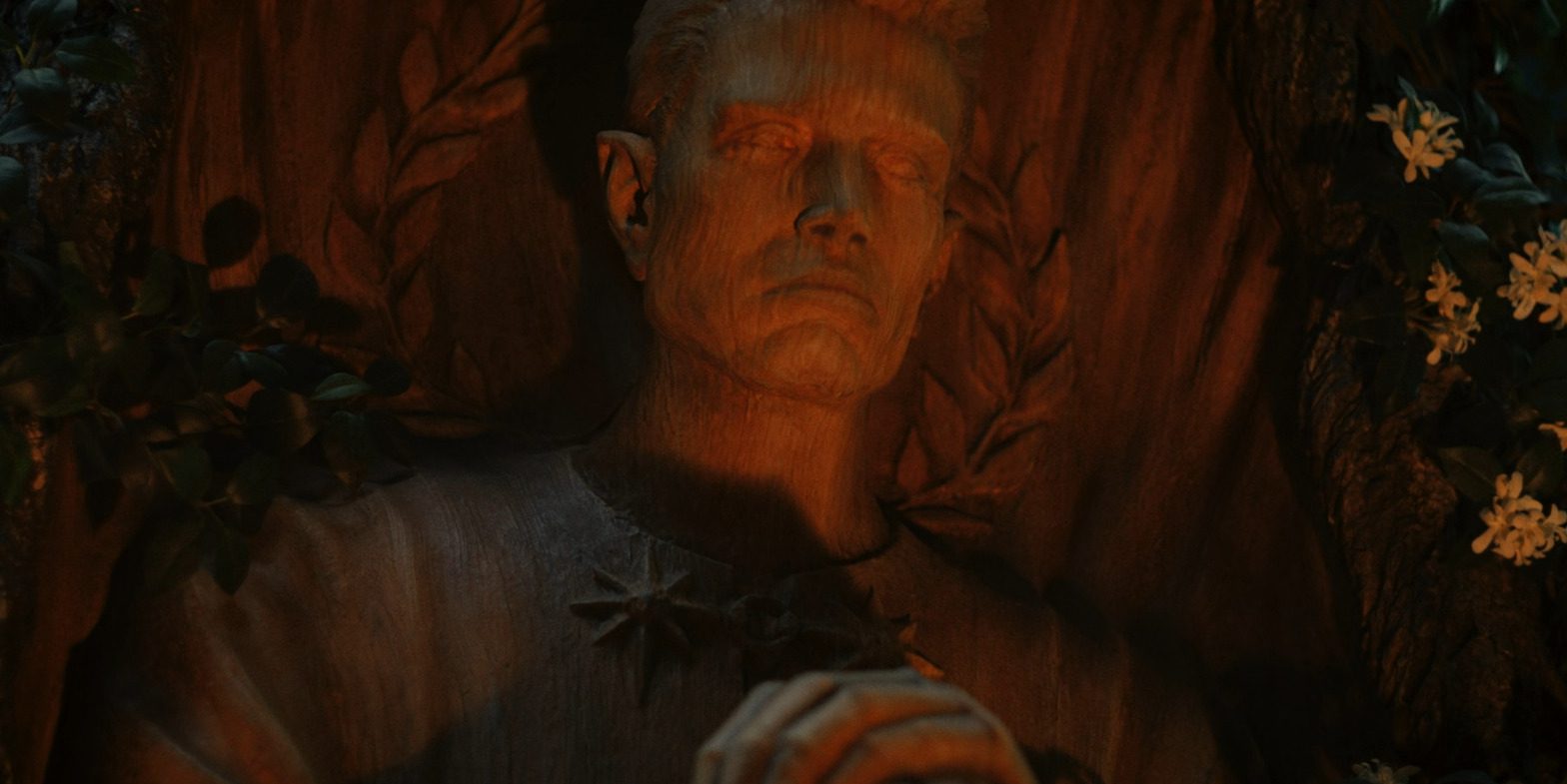
The camera briefly pans over a wooden statue of a lady with long, flowing hair and a hairy dog in front of her at one point. There is no denying that this image depicts the dog Huan and the immortal beauty Lthien. One of Tolkien’s most famous female characters, Lthien was modeled after the author’s wife, and her gravestone even bears her Elvish name. She is Elrond’s great-grandmother and well-known for her hair. Huan, the dog, is also known as the greatest Woflhound in the history of Middle-earth. He speaks several times, and at one point, he even outduels Sauron.
The Blessed Realm
In the opening scene of “Rings of Power,” Galadriel and her crew arrive in a foggy, rainy sea after setting sail for Valinor. All the Elves except Galadriel voluntarily join the glorious, blinding light that is slowly revealed as the clouds slowly disperse. There are many possibilities for interpretation here, even though this isn’t strictly how the Elves’ departure from Middle-earth is depicted in the books. However, there is one particular element that deserves special attention when it comes to the little things.
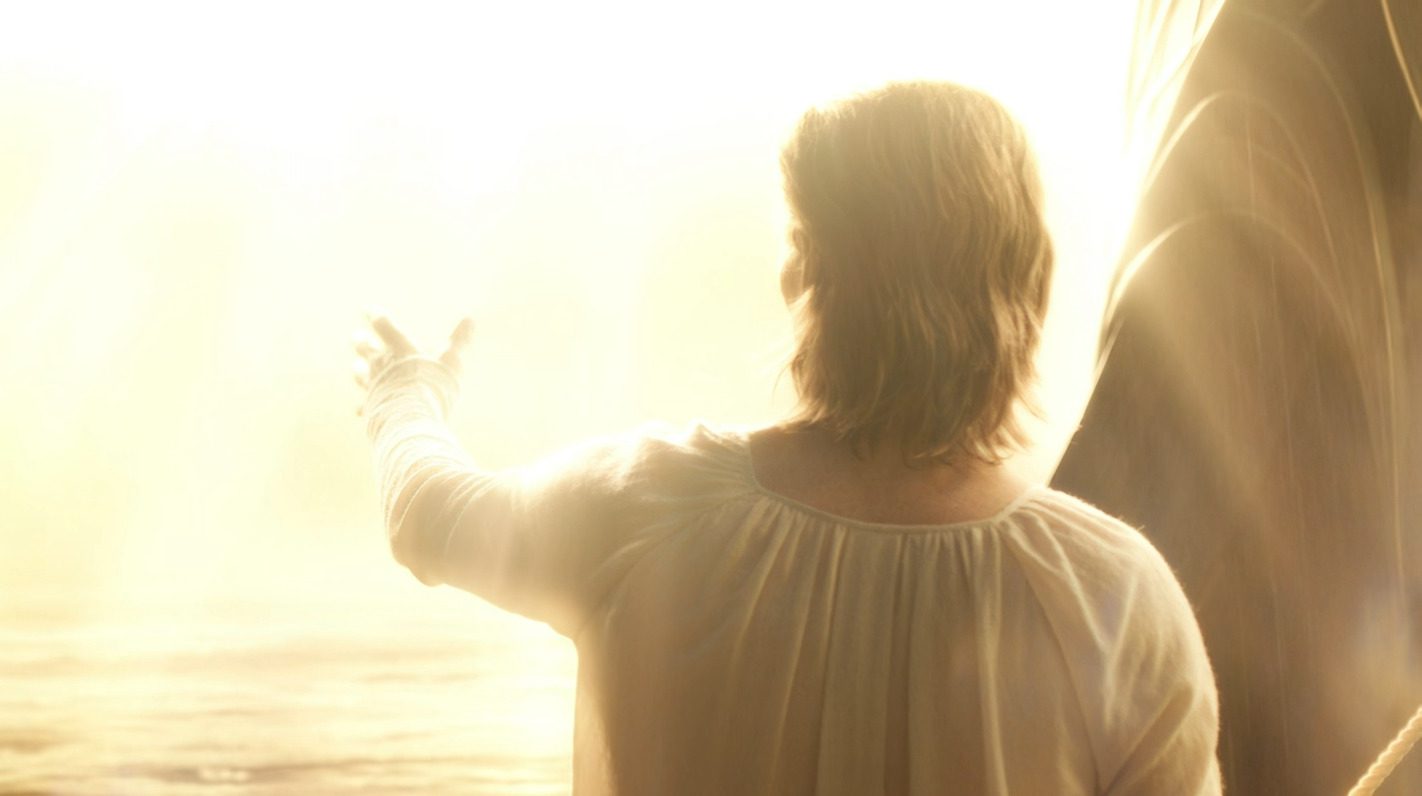
In two of the “Lord of the Rings” books, Frodo had the experience of entering the Blessed Realm. In the first book, the first time occurs in a dream. He sails there for good the second time at the conclusion of “The Return of the King.” This is how the event is described in that book: ”
The gray rain curtain appeared to turn into silver glass and be rolled back at that point, giving him the impression that he was returning to the house of Bombadil from his dream, where he had seen white shores and a faraway green region lit up by a rising sun”. Although Valinor may not be visible in the scene from “Rings of Power,” we can see a gray rain curtain that pulls back as the characters get closer.
Also Read: The Rings Of Power Episode 1 Recap: The Introduction Of Something Great

